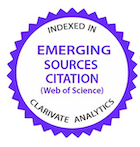Funcionalidade nutricional do complexo xilanolítico obtida de Aspergillus japonicus var. aculeatus UFMS 48.136 em dietas para suínos
DOI:
https://doi.org/10.1590/1809-6891v25e-77576EResumo
Realizou-se este estudo com o objetivo de avaliar a funcionalidade nutricional do complexo xilanolítico produzido a partir de fungos da linhagem Aspergillus japonicus var. aculeatus UFMS 48.136, oriundo do bioma Cerrado/Pantanal sul mato-grossense em comparação à xilanase comercial, em dietas de suínos. Foram utilizados dezesseis suínos machos, com peso inicial de 64,23 ± 10,5 kg, distribuídos em delineamento experimental de blocos ao acaso, com quatro dietas: controle, formulado de acordo com as recomendações nutricionais; controle negativo, formulado com redução de 100 Kcal / kg de energia metabolizável (EM); controle negativo + xilanase Cerrado / Pantanal; controle negativo + xilanase comercial; com quatro repetições cada. A suplementação das xilanases proporcionou maiores (P<0,05) valores de energia digestível (ED), metabolizável (EM) e maiores (P<0,05) digestibilidade da matéria seca (MS), matéria orgânica (MO), proteína bruta (PB), extrato etéreo (EE), fibra em detergente neutro (FDN) e fibra em detergente ácido (FDA) em relação à dieta controle negativo, mas sem diferir (P>0,05) da dieta controle. A inclusão das xilanases proporcionou aumento (P<0,05) nos coeficientes de digestibilidade (CD) e metabolizabilidade da energia bruta (EB), MS, MO, PB, EE, FDN e FDA. Não foi constatada diferença (P>0,05) nos valores de digestibilidade e de CD entre as xilanase Cerrado/Pantanal e Comercial. A inclusão das xilanases possibilita a redução de 100 Kcal de EM por kg da dieta. A xilanase Cerrado / Pantanal possui a mesma eficiência nutricional em comparação com a xilanase comercial.
Downloads
Referências
Rostagno HS, Albino LFT, Donzele JL, Gomes PC, Oliveira RD, Lopes DC, Ferreira AS, Barreto SLT, Euclides RF. Composição de alimentos e exigências nutricionais: tabelas brasileiras para aves e suínos. 3ª Ed. Viçosa, MG: UFV. 186p. 2017.
Lafond M, Bouza B, Eyrichine S, Rouffineau F, Saulnier L, Giardina T, Bonnin E, Preynat A. In vitro gastrointestinal digestion study of two wheat cultivars and evaluation of xylanase supplementation. Journal of Animal Science and Biotechnology. 2015; 6(5): 1-14. https://doi.org/10.1186/s40104-015-0002-7
Wenk C. The role of dietary fibre in the digestive physiology of the pig. Animal Feed Science and Technology. 2001; 90(1-2): 21-33. https://doi.org/10.1016/S0377-8401(01)00194-8
Facchini FD, Vici AC, Reis VRA, Jorge JA, Terenzi HF, Reis RA, Polizeli MDLTDM. Production of fibrolytic enzymes by Aspergillus japonicus C03 using agro-industrial residues with potential application as additives in animal feed. Bioprocess and Biosystems Engineering. 2011; 34: 347-355. https://link.springer.com/article/10.1007/s00449-010-0477-8
Trevisan HC. “Lipases”. In: Said S, Pietro RCLR. Enzimas como agente Biotecnológico. 1ª Ed. Ribeirão Preto: Editora Legis Summa, p.115-135, 2004.
Torres-Pitarch A, Hermans D, Manzanilla EG, Bindelle J, Everaert N, Beckers Y, Lawlor PG. Effect of feed enzymes on digestibility and growth in weaned pigs: A systematic review and meta-analysis. Animal Feed Science and Technology. 2017; 233: 145–159. https://doi.org/10.1016/j.anifeedsci.2017.04.024
Sun H, Cozannet P, Ma R, Zhang L, Huang YK, Preynat A, Sun LH. Effect of concentration of arabinoxylans and a carbohydrase mixture on energy, amino acids and nutrients total tract and ileal digestibility in wheat and wheat by-product-based diet for pigs. Animal Feed Science and Technology. 2020; 262: 114380. https://doi.org/10.1016/j.anifeedsci.2019.114380
De Lange CFM, Pluske J, Gong J, Nyachoti CM. Strategic use of feed ingredients and feed additives to stimulate gut health and development in young pigs. Livestock Science. 2010; 134(1-3): 124–132. https://doi.org/10.1016/j.livsci.2010.06.117
Petry AL, Patience JF. Xylanase supplementation in corn-based swine diets: a review with emphasis on potential mechanisms of action. Journal of Animal Science, 2020; 98(11): 1-12. https://doi.org/10.1093/jas/skaa318
Zhang YJ, Liu Q, Zhang WM, Zhang ZJ, Wang WL, Zhuang S. Gastrointestinal microbial diversity and short-chain fatty acid production in pigs fed different fibrous diets with or without cell wall-degrading enzyme supplementation. Livestock Science. 2017; 207: 105–116. https://doi.org/10.1016/j.livsci.2017.11.017
Caires CM, Fagundes NS, Fernandes EDA, Carvalho AD. Enzimas na alimentação de frangos de corte. Revista Eletrônica Nutritime. 2008; 5(1): 491-497. https://www.nutritime.com.br/site/artigo-049-enzimas-na-alimentacao-de-frangos-de-corte/
Zier-Rush CE, Groom C, Tillman M, Remus J, Boyd RD. The feed enzyme xylanase improves finish pig viability and carcass feed efficiency. Journal of Animal Science. 2016; 94: 115. https://doi.org/10.2527/msasas2016-244
He X, Yu B, He J, Huang Z, Mao X, Zheng P, Luo Y, Luo J, Wang Q, Wang H, Yu J, Chen D. Effects of xylanase on growth performance, nutrientes digestibility and intestinal health in weaned piglets. Livestock Science. 2020; 233: 103940. https://doi.org/10.1016/j.livsci.2020.103940
Mejicanos GA, González-Ortiz G, Nyachoti CM. Effect of dietary supplementation of xylanase in a wheat-based diet containing canola mealon growth performance, nutriente digestibility, organ weight, and short-chain fatty acid concentration in digesta when fed to weaned pigs. Journal of Animal Science. 2020; 98(3): skaa064. https://doi.org/10.1093/jas/skaa064
Neto MT, Dadalt JC, Gallardo C. Nutrient and energy balance, and amino acid digestibility in weaned piglets fed wheat branandan exogenous enzyme combination. Animal. 2020; 14(3): 499-507. https://doi.org/10.1017/S1751731119002052
Greiner R, Konietzny U. Phytase for food applications. Food Technology & Biotechnology. 2006; 44(2): 125–140. https://www.researchgate.net/profile/Ralf-Greiner/publication/228337756_Phytase_for_Food_Application/links/00b7d524e81d91fab7000000/Phytase-for-Food-Application.pdf
Velázquez-De Lucio BS, Hernández-Domínguez EM, Villa-Garcia M, Diaz-Godinez G, Mandujano-Gonzalez V, Mendoza-Mendoza B, Alvarez-Cervantes J. Exogenous enzymes as zootechnical additives in animal feed: A review. Catalysts. 2021. https://doi.org/10.3390/catal11070851
Petry AL, Masey O’Neill HV, Patience JF. Xylanase, and the role of digestibility and hindgut fermentation in pigs on energetic diferences among high and low energy corn samples. Journal of Animal Science. 2019; 97(10): 4293-4297. (10.1093/jas/skz261)
Ravindran V. Feed enzymes: the science, practice, and metabolic realities. Journal of Applied Poultry Research. 2013; 22(3): 628–636. https://doi.org/10.3382/japr.2013-00739
Ojha BK, Singh PK, Shrivastava N. Enzymes in the Animal Feed Industry. In Enzymes in Food Biotechnology; Mohammed K. Ed. Academic Press: Cambridge, MA, USA, p.93–109. 2019.
Silva PO, de Alencar Guimarães NC, Serpa JDM, Masui DC, Marchetti CR, Verbisck NV, Zanoelo FF, Ruller R, Giannesi, GC. Application of an endoxylanase from Aspergillus japonicus in the fruit juice clarification and fruit peel waste hydrolysis. Biocatalysis and Agricultural Biotechnology. 2019; 21: 101312. https://doi.org/10.1016/j.bcab.2019.101312
Rizzatti ACS, Jorge JA, Terenzi HF, Rechia CGV, Polizeli MDLTDM. Purification and properties of a thermostable extracellular β-xylosidase produced by thermotolerant Aspergillus phoenicis. Journal of Industrial Microbiology and Biotechnology. 2001; 26: 156–160. https://link.springer.com/article/10.1038/sj.jim.7000107
Silva DJ, Queiroz AC. Análise de alimentos. Métodos químicos e biológicos. 3ª Ed. Viçosa: Universidade Federal de Viçosa, 235p. 2002.
Henn JD, Ribeiro AML, Kessler ADM. Comparação do valor nutritivo de farinhas de sangue e de farinhas de vísceras para suínos utilizando-se o método da proteína e gordura digestíveis e o método de substituição. Revista Brasileira de Zootecnia. 2006; 35(4): 1366-1372. https://doi.org/10.1590/S1516-35982006000500016
Morgan DJ, Cole, DJA, Lewis D. Energy values in pig nutrition the relationship between digestible energy, metabolizable energy and total digestible nutrient values of a range of feedstuffs. The Journal of Agricutural Science. 1975; 84(1): 7-17. https://doi.org/10.1017/S0021859600071823
Sakomura N, Rostagno HS. Métodos de pesquisa em nutrição de monogástricos. Jaboticabal, SP: FUNEP, p.58. 2016.
Tiwari UP, Chen H, Kim SW, Jha R. Supplemental effect of xylanase and mannanase on nutrient digestibility and gut health of nursery pigs studied using both in vivo and in vitro models. Animal Feed Science and Technology. 2018; 245: 77–90. https://doi.org/10.1016/j.anifeedsci.2018.07.002
Kiarie E, Liu Y, Walsh MC, Stein HH, Payling L. Xylanase responses on apparent ileal digestibility of nutrients, fiber and energy in growing pigs fed corn, 30% corn co-products and soybean meal based diets as influenced by microbial phytase and acclimatization period. Journal of Animal Science. 2016; 94:116. https://doi.org/10.2527/msasas2016-245
Barrera M, Cervantes M, Sauer WC, Araiza AB, Torrentera N, Cervantes M. Ileal amino acid digestibility and performance of growing pigs fed wheat-based diets supplemented with xylanase. Journal of Animal Science. 2004; 82(7): 1997-2003. https://doi.org/10.2527/2004.8271997x
Partridge GG. The role and efficacy of carbohydrase enzymes in pig nutrition. In: Bedford MR, Partridge GG. (Ed.) Enzymes in farm animal nutrition. Wallingford: CABI Publishing. p.161-198. 2001. doi: https://doi.org/10.1079/9780851993935.0161
Yin YL, McEvoy JDG, Schulze H, Hennig U, Souffrant WB, McCracken KJ. Apparent digestibility (ileal and overall) of nutrients and endogenous nitrogen losses in growing pigs fed wheat (var. Soissons) or its by products without or with xylanase supplementation. Livestock Production Science. 2000; 62(2): 119-132. https://doi.org/10.1016/S0301-6226(99)00129-3
Murphy P, Dal Bello F, O'Doherty JV, Arendt EK, Sweeney T, Coffey A. Effects of cereal beta-glucans and enzyme inclusion on the porcine gastrointestinal tract microbiota. Anaerobe. 2012; 18(6): 557-565. https://doi.org/10.1016/j.anaerobe.2012.09.005
Munyaka PM, Nandha NK, Kiarie E, Nyachoti CM, Khafipour E. Impact of combined beta-glucanase and xylanase enzymes on growth performance, nutrients uti- lization and gut microbiota in broiler chickens fed corn or wheat-based diets. Poultry Science. 2016; 95(3): 528-540. https://doi.org/10.3382/ps/pev333
Zhang Z, Tun HM, Li R, Gonzalez BJ, Keenes HC, Nyachoti CM, Kiarie E, Khafipour E. Impact of xylanases on gut microbiota of growing pigs fed corn- or wheat-based diets. Animal Nutrition. 2018; 4(4), 339–350. https://doi.org/10.1016/j.aninu.2018.06.007
Zhao J, Zhang G, Liu L, Wang J, Zhang S. Effects of fibre-degrading enzymes in combination with different fibre sources on ileal and total tract nutrient digestibility and fermentation products in pigs. Archives of Animal Nutrition. 2020; 74(4), 309-324. https://doi.org/10.1080/1745039X.2020.1766333
Weiland AS, Patience JF. Effect of xylanase supplementation on nutrient and energy digestibility at three time periods in growing pigs fed diets based on corn or corn distillers dried grains with solubles. Animal Feed Science and Technology. 2021; 276: 114929. https://doi.org/10.1016/j.anifeedsci.2021.114929
Lehnen CR, Lovatto PA, Andretta I, Kipper M, Hauschild L, Rossi CA. Meta-análise da digestibilidade ileal de aminoácidos e minerais em suínos alimentados com dietas contendo enzimas. Pesquisa Agropecuária Brasileira. 2011; 46(4): 438-445. https://doi.org/10.1590/S0100-204X2011000400014
Downloads
Publicado
Como Citar
Edição
Seção
Licença
Copyright (c) 2024 Ciência Animal Brasileira / Brazilian Animal Science

Este trabalho está licenciado sob uma licença Creative Commons Attribution 4.0 International License.
Autores que publicam nesta revista concordam com os seguintes termos:
- Autores mantém os direitos autorais e concedem à revista o direito de primeira publicação, com o trabalho simultaneamente licenciado sob a Licença Creative Commons Attribution que permite o compartilhamento do trabalho com reconhecimento da autoria e publicação inicial nesta revista.
- Autores têm autorização para assumir contratos adicionais separadamente, para distribuição não-exclusiva da versão do trabalho publicada nesta revista (ex.: publicar em repositório institucional ou como capítulo de livro), com reconhecimento de autoria e publicação inicial nesta revista.
- Autores têm permissão e são estimulados a publicar e distribuir seu trabalho online (ex.: em repositórios institucionais ou na sua página pessoal) a qualquer ponto antes ou durante o processo editorial, já que isso pode gerar alterações produtivas, bem como aumentar o impacto e a citação do trabalho publicado (Veja O Efeito do Acesso Livre).






























